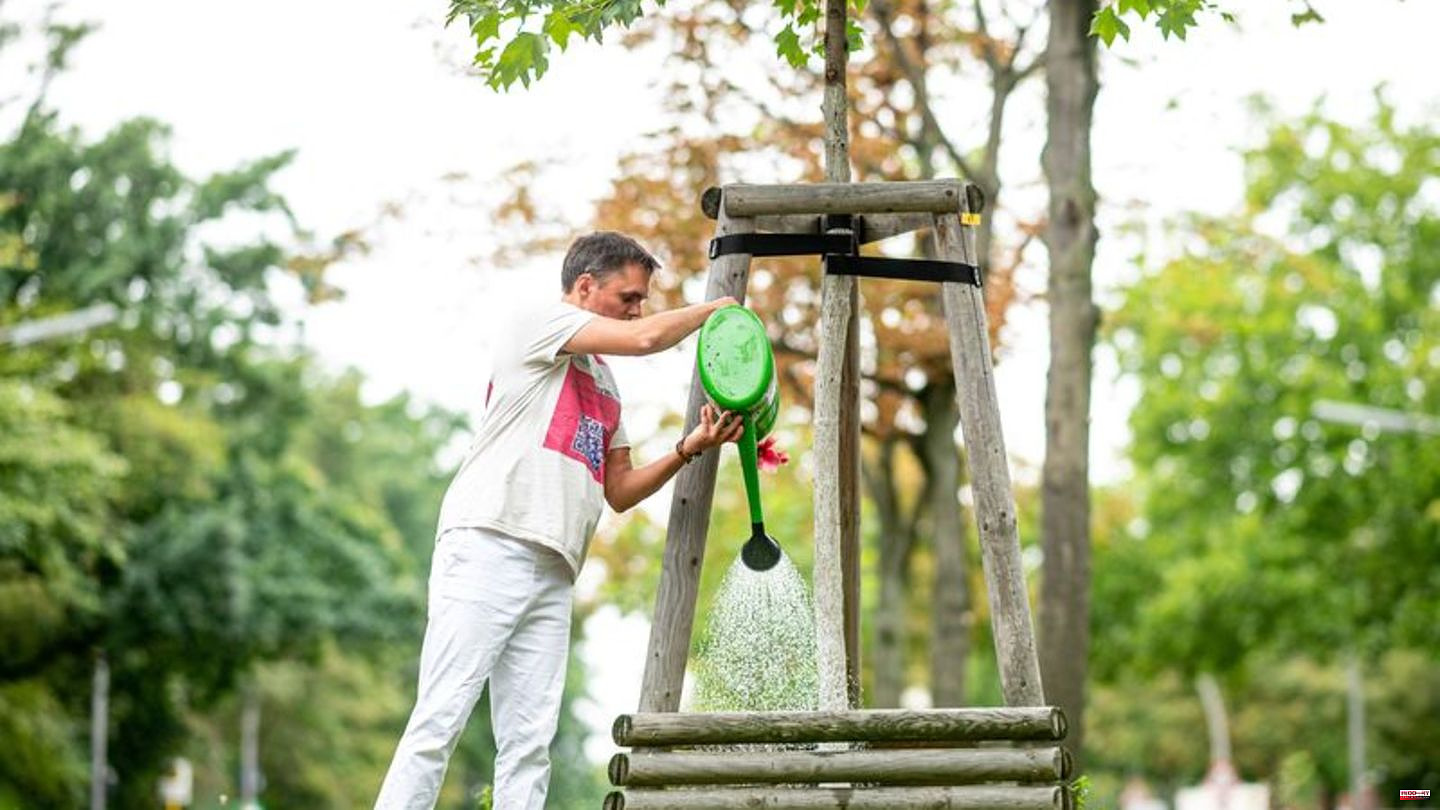Sebastian Herges grabs several watering cans three times a week. The 43-year-old doesn't want to use it to supply flowers in the garden - but dry city trees in Berlin. "As a resident, I take care of the trees in the neighborhood on a voluntary basis," says Herges. He fills up the watering cans at public pumps, puts them on his bike trailer and sets off. As the founder of the "BerlinerBäumeWässerer" initiative, he wants to protect urban trees from drought. Hundreds of citizens are also networking via the Berlin platform "giessdenkiez" or "giessdeinviertel" in Leipzig.
The long dry phase of the past few weeks has not only affected the forests in Germany. "City trees can deal with the drought much more difficult than the trees in the forest," explains Christian Ammer, Professor of Forest Sciences and Forest Ecology at the University of Göttingen. The reason: In the cities, the trees often have less space for their roots. They are therefore less able to absorb water in the ground than in the forest. At the same time, they get too much sun because they are often isolated on the streets. "The more a tree is exposed to the sun from all sides, the more water it loses," says Ammer.
Trees shed their leaves in the middle of summer
The drought is particularly challenging for young trees in the city. "They don't have big roots yet and can only create a little water," says Ammer. At the same time, they are exposed to particularly intense heat near the ground. To combat drought stress, many trees roll up their leaves. Some even shed them completely - and that in the middle of summer. As a result, these trees donate less shade. The strategies only help in the short term. "The trees are then weakened and are less able to defend themselves against pests," explains the professor. In the cities, this problem currently mainly affects the chestnut with the leaf miner, a tiny butterfly.
According to a tree report by the environmental association BUND from 2021, more city trees are felled in Berlin every year than are replanted. On average, the capital loses around 1,100 trees a year as a result, says BUND officer Afra Heil. Many trees would be felled for construction projects. Storm and drought damage were also among the reasons. For sufficient new plantings, the municipalities often lack the will or the specialist staff for the subsequent care, says Heil. Tree stocks are also declining elsewhere. In the 15 largest cities in Bavaria, at least 165,500 trees were felled between 2011 and 2021, according to a BUND survey. Subtracting the replanting leaves a loss of 34,560 trees. Due to incomplete data on tree felling, the association assumes that the number of unreported cases is higher.
The tree nurseries in which the city trees grow must also find strategies to deal with climate change, says Bernhard von Ehren, Vice President of the Association of German Tree Nurseries (BdB). Since more dry summers are expected, one has to look for new tree species from other parts of the world. Such more robust "climate trees" include the hop beech, the Persian ironwood tree and the sweetgum and locust from North America. The zelkova from Asia could also be planted more frequently in German cities in the future. "These trees now live in a climate that we must expect here in the future," says von Ehren.
Watering from time to time is usually not enough
In order to protect the trees in times of drought, several cities have called on their citizens in recent weeks to water the can themselves - for example in Essen, Speyer and Ludwigshafen. Environmental groups also appealed for trees to be watered. However, the BdB Vice-President sees responsibility not only with individual citizens, but above all with the cities and municipalities themselves. "Young city trees in particular need professional, documented support. Unfortunately, this is often skimped on," says von Ehren. Larger plant pits with oxygen-rich soil and less sealing with concrete, paving stones and asphalt are also necessary. "If someone comes up with a small watering can from time to time, that's well intentioned," says von Ehren. However, it is not enough.
According to BUND consultant Heil, a city tree can also tolerate more than one watering can, namely around 80 to 100 liters per week. So that the liquid does not evaporate so quickly on hot days, it is best to water early in the morning or in the evening. Volunteer Sebastian Herges also fills several watering cans for each tree. The 43-year-old knows that he cannot save the trees in his neighborhood all by himself and is hoping for more supporters. "If I can't or am not there, unfortunately nobody here will do it either," says Herges. However, he cannot be stopped by dissenting voices. "No one can forbid me from watering a dry tree in the park. As a resident, I want to help."












